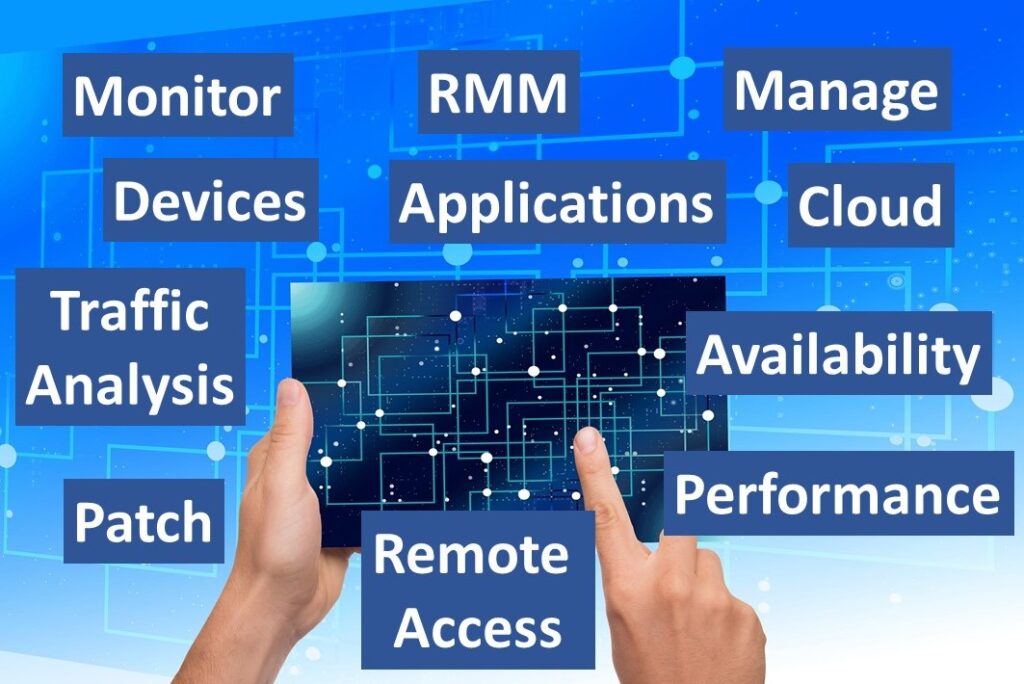Blog
You got RMM. Do you still need a Network Monitoring Tool?

RMM (Remote Monitoring and Management) and network monitoring tools are two different types of tools used in IT management and administration.
As an IT manager, you are likely familiar with the importance of monitoring and managing your organization’s IT assets, including devices, systems, and networks. To achieve this, you have two main options: RMM (Remote Monitoring and Management) tools and network monitoring tools.
RMM tools are designed to provide a comprehensive solution for remote management and monitoring of your IT assets. These tools allow you to manage and monitor a wide range of devices, systems, and software from a single, centralized location. This can include computers, servers, mobile devices, and network devices. With RMM tools, you can remotely access devices, deploy software, manage patches, monitor performance, and generate reports.
Network monitoring tools, on the other hand, are focused specifically on the monitoring and management of your network. They allow you to monitor network performance, availability, and security in real-time. Network monitoring tools provide features such as network traffic analysis, network device monitoring, and alerting in case of network outages or performance issues. This helps you ensure that your network is functioning properly and quickly identify and resolve any issues that may arise.
Some monitoring tools go beyond simply monitoring networks and encompass monitoring applications, cloud infrastructure, and even user interactions. Utilizing artificial intelligence technology, these tools can automate monitoring tasks, reducing the need for operator intervention, through anomaly detection, generating appropriate alerts, and assisting with root cause analysis.
So, what should you consider when choosing between RMM and network monitoring tools? First, consider the scope of your IT management needs. If you need a comprehensive solution for managing and monitoring multiple devices and systems, then an RMM tool may be the best choice. However, if you are primarily concerned with network performance and availability, then a network monitoring tool may be a better fit.
Next, consider the level of complexity you are comfortable with. RMM tools tend to be more complex and have a steeper learning curve compared to network monitoring tools, which are typically easier to use and configure.
Finally, consider your budget. RMM tools tend to be more expensive than network monitoring tools, so you may need to factor this into your decision-making process.
In conclusion, both RMM and network monitoring tools are important tools in IT management. The choice between the two will depend on your specific needs and the IT infrastructure of your organization. An organization may choose to use both RMM and network monitoring tools, depending on their specific requirements.

Quick Links
Other Pages
Contact Us
Know where to find us? Let's take a look and get in touch !
- Moda Technologies Inc
- 20830 Stevens Creek Blvd
- #1075 Cupertino, CA 95014
- +1 (408)-840-3216
- info@modatechnologies.com
Copyright © Moda Technologies Inc. All rights reserved.
